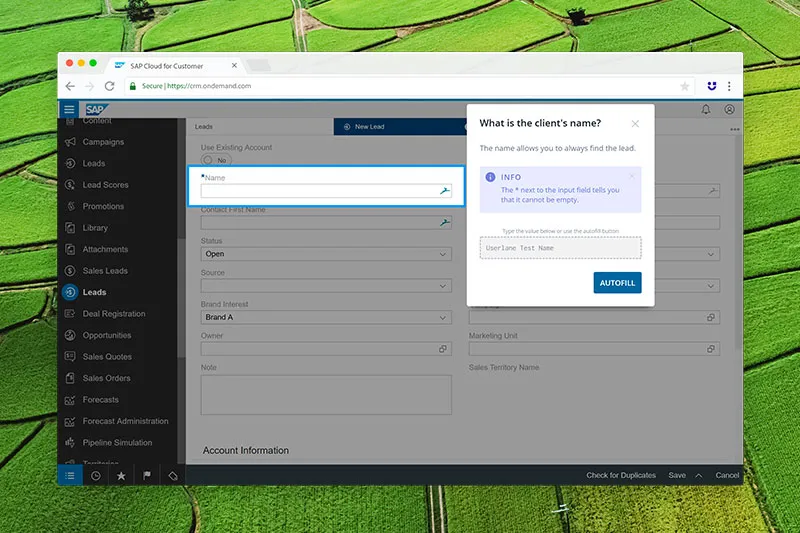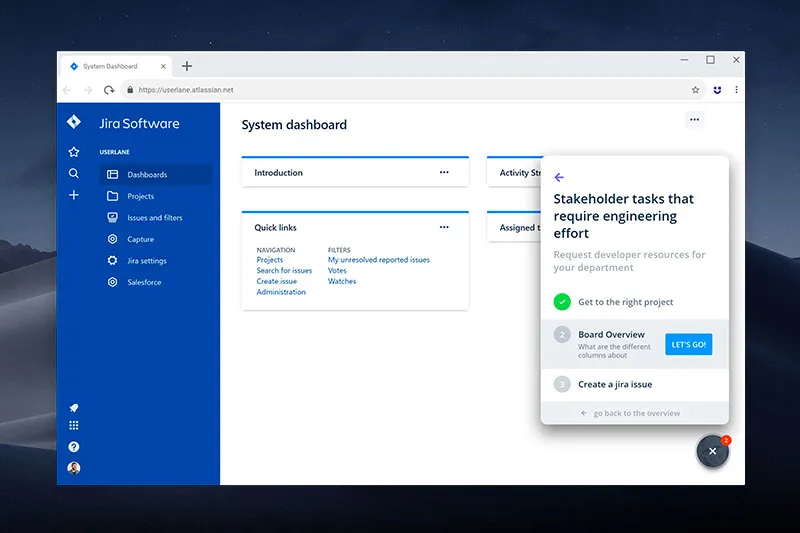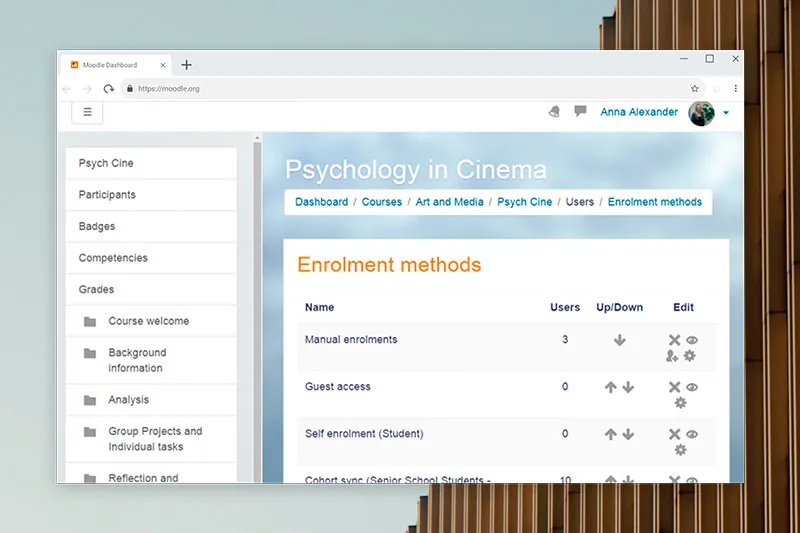Electronic Performance Support System (EPSS) vs LMS

What is an Electronic Performance Support System (EPSS) and how is it different from a Learning Management System (LMS)?
The short answer is that an Electronic Performance Support System is a digital adoption platform that leads to increased software adoption through interactive guidance, while a Learning Management System is a hubspot for learning material that can be accessed from different locations.
But let’s try to answer these questions in more detail.
There’s a lot of confusion regarding modern L&D technology and elearning resources, particularly around the question of how an Electronic Performance Support System and digital adoption fit in this ecosystem.
Let me quickly introduce some of the latest elearning solutions and their scope of action while trying to emphasize the role of interactive electronic performance support for software adoption.
Table of Contents
The Role of Electronic Performance Support Systems in Modern Corporate Training
One of the most important principles in today’s modern training and development ecosystem is variety.
It is essential to create a Check out our latest webinars in order to motivate staff to create a great customer experience. And training has become one of the key factors in creating a pleasant employee experience that boosts performance and reduces employee turnover..
On top of variety, key elements of a successful modern training plan must be:
- Relevant
- Just-in-time
- Interactive
- Mobile
- Portable
- Individual
- Effective
- Supported by micro-learning experiences
- Self-paced
- Measurable
Relevant training is training that revolves around clear objectives whose learning outcomes reflect the daily needs of each individual employee. Such a plan needs to be customized and employees must be in control of the content they consume.
The experience needs to be delivered just-in-time across different platforms and systems so that employees can access information anytime, anywhere, using any sort of interface.
Employees need to feel motivated and supported by their training activities while immediately seeing results.

The process starts with planning, and this phase takes into account the aspirations of each employee and their needs. Instructional design and content creation can be steered by the employee as well, while the whole process needs to be monitored and constantly evaluated for adjustments.
EPSS vs. LMS: Different Tools, Different Objectives
Creating ad hoc training programs is one of the biggest challenges of talent management in the digital era.
That’s why, over time, the whole sector has gone through major changes. Of all HR related sectors, learning and development has been the one that mostly went through transformation and innovation.
Mostly, training used to be linked to seminars and classes.
Remote connectivity moved the focus away from classic instructor-led training (ILT) and opened the doors for remote video training, on-demand classes and courses, and MOOCs.
The entire course material can now be digitized and progress can be monitored in real time.
This has led to more rounded elearning solutions that combine content consumption with exercises and tests.
And following the concept of variety, corporates often adopt hybrid solutions that integrate different learning delivery methods at different stages (from onboarding to training or retraining…), going from macro-learning sessions to solutions that allow for micro-learning experiences.
Such blended learning programs try to combine the pros of different methodologies to support continuous learning and fight against problems connected to the forgetting curve.
It must be said that no training solution is perfect. There are limitations connected to each different training and development tool.
However, some solutions are more suited to specific areas as we’re about to see in our comparison between a Learning Management System and an Electronic Performance Support System.
What is a Learning Management System (LMS)?
An LMS is a platform that allows companies to create, coordinate, and monitor online learning activities.
However, not all LMS solutions offer an authoring tool that allows companies to create training materials. In some cases, it is necessary to integrate an LMS with a third-party application for content creation.
In any case, though, remote learners can access centralized learning content at anytime and learn at their own pace.
Most of the modern learning management platforms are cloud-based (SaaS) and don’t require employees to download any software to access the knowledge base or the training content.
However, in some cases, companies opt for a self-hosted solution. In this case, everything happens via stationary software that employees use to go through the training materials.

Specific content can be accessed by different units and courses can be personalized and delivered to employees, partners, or even customers.
It must be noted that different LMS solutions cater to different learning needs. Some LMS solutions are specifically developed for individual sectors and companies often need to integrate different platforms to cover all the skills their employees need to develop.
Some learning management systems also work with mobile devices and online platforms offer full portability.
An LMS is a great solution to launch global training initiatives while also personalizing the learning path for employees.
At the same time, employees can test and monitor their performance.
Most of the LMS solutions come with analytics and assessment tools. They often integrate gamification and social learning to motivate learners together with advanced certification features.
Interactive Electronic Performance Support Systems
Learning management systems are great tools that companies need to implement to facilitate elearning and allow for interactive skill development.
The main concept here is that an LMS is an elearning solution. Learning and practicing occurs within the platform where learners consume content (documents, videos, exercises…), learn, and then go back to their daily activities and implement the lessons they learned.
An LMS solution is an asynchronous experience.
An Electronic Performance Support System (EPSS) is a digital adoption platform that was developed specifically to boost software adoption.
Unlike generic learning management systems, interactive electronic performance support has two specific objectives:
- Allow anybody to use software as an advanced user.
- Increase feature and software adoption.
Whereas an LMS offers an asynchronous experience, electronic performance support guides users in real time in the actual platform they’re using while they’re working with it.

An EPSS is an overlay that goes on top of any other software application.
Users are then welcomed by a virtual assistant that can guide them through processes in real time.
Each interactive guide (or interactive walkthrough) can be designed to support first-time users as well as expert users while they accomplish their daily tasks in a system.
An interactive Electronic Performance Support System is specifically designed to deal with the following limitations of other elearning platforms when it comes to software training:
- Most of the training courses and materials are not relevant for daily tasks in an application.
- After attending a seminar or going through asynchronous training materials, most of the users only use a fraction of the features that an application offers.
- Task completion in software applications (without external support) is usually below 60%.
- Most of the concepts learned in training sessions are soon forgotten and staff needs to be retrained to be efficient when working with software.
- Somebody needs to onboard new employees on how to use software.
- Productivity decreases when employees are stuck in a software application and need to check documentation, forums, video tutorials, or ask a colleague.
- Companies need to create lots of training materials (documentation, screenshots, videos…) for every software solution and for every new release.
- Companies are often flooded with internal support tickets that mostly link to software features.
- As a result, the ROI of software implementation programs sinks.
- Change management processes are hindered by internal resistance to change when it comes to introducing new technology.
Electronic Performance Support System and Digital Adoption
A Learning Management System is a useful solution that applies to many skill development areas.
But when it comes to digital adoption, an LMS will always present the same limitations of conventional learning methodologies.
On the other hand, an Electronic Performance Support System is a specific solution that was developed to maximize software adoption, productivity, and create immediate software know-how from day one.
An EPSS can be used as an elearning platform but can also be used to eliminate the need for onboarding, training, and retraining by supporting users directly within the platform they’re working in.
The Learning Process with an Electronics Performance Support System
Interactive guides can be used to create onboarding checklists and walkthroughs. Instructional designers can create an optimal learning experience based on a discovery journey that leads a new users from zero to hero without any delay and without abandoning the platform itself.
In this case, learners will be able to unlock guides upon completion of previous ones and can follow a specific training path that can be personalized based on role, authority, previous knowledge…

This way, employees can be onboarded on software applications directly at their desks while they actually accomplish tasks in the system. This brings time-to-competency in an application down to virtually zero.
With aggregate analytics, instructors and training professionals can monitor progress and pinpoint areas that may be more confusing for software users and quickly intervene.
Benefits of Embedded Performance Support
The key element of an interactive Performance Support System is the continuous on-screen support that employees receive while they perform their daily tasks in the system.
Users can always click on their virtual assistant and start a guide that supports them throughout a process from the beginning till the end – it’s as if they have their very own personal digital nerd sitting next to them and showing them how to perform tasks in the system.
This form of continuous support eliminates the need for retraining and boosts performance in the system while simultaneously increasing feature and software adoption.
Every employee can perform any task in any application without previous knowledge or training.
Task completion goes up to 100% as employees are assisted step by step even after new software releases.
Other benefits of interactive on-screen guides also include the opportunity for companies to standardize processes (since all the employees follow the same set of step-by-step instructions while working) and obtain a much higher ROI after a new software rollout.
Despite training courses, feature adoption is on average 40%. This means that 60% of what companies pay for software doesn’t translate into added value.

By boosting feature and software adoption to 100%, a digital adoption platform allows companies to sort out the issue and guarantees immediate software know-how.
Electronic Performance Support System VS LMS
In summary, there are five main differences between a Learning Management System and an Electronic Performance Support System:
- LMS solutions have a wide scope but aren’t developed specifically for training people on how to use software.
- LMS solutions are similar to classic training methodologies as they offer an asynchronous experience. Performance support, on the other hand, occurs in real time while employees perform daily tasks in the system.
- Electronic performance support is designed to boost software adoption and productivity.
- An LMS is a training solution while an EPSS can be used to onboard and train staff and constantly support them within processes.
- An Electronic Performance Support System doesn’t require companies to create documentation and visuals to train employees since the process occurs directly on-screen and within the software application itself.
An interactive Electronic Performance Support System like Userlane comes with an editor that allows companies to create tailor-made guides in minutes thanks to its AI-driven algorithm that automatically generates clickpaths for processes.
Variety is important. Companies need to implement different solutions to face different challenges.
When it comes to digital and software adoption, an interactive Electronic Performance Support System yields the best outcome for both the employer and the employee.

